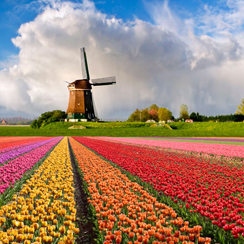Around the time that I turned sixty, I had a most ambiguous moment of self-realization — that I've gone to church almost every Sunday of my life. That’s well over three thousand services.
I'm grateful for my heritage. My mother was a church organist for twenty-five years in a small Presbyterian church. Her grandfather was a Presbyterian pastor, her mother spent seventy-nine years in great-grandfather McGrath's church, and her sister has worshiped there for ninety-two years — ever since she was born.
Nonetheless, such long term religiosity has its risks. Boredom. Cliches. Jargon. Cynicism. Merely going through the motions, however well intended. Plus, anyone who has gone to church for sixty years and has paid attention has honest questions about complex issues. For his part, my father quit church when I was in high school. I have my own critical questions, but I’ve decided to do my doubting within the community of faith, and my believing within the broader cultural conversation.
At about this same time, I began to notice something brazen, even bizarre, at the church that I attend every Sunday. It’s always been there, and in some form has a history as old as the gospel itself. So, it was nothing new, but for some reason it suddenly grabbed my attention, and ever since then has not let go.
My Episcopal church is in many ways quite old school. The building has a steeple and stained glass. The priests wear robes. We even have a paid organist. And week after week we do what churches have done for two millennia. We sing a few hymns, we pray for each other and the world, we listen to a sermon, we celebrate communion, at the end come the announcements, and then we go drink coffee on the patio. A sort of standard operating procedure for a churchy church.
But there’s one part of our religious routine that now feels like a gut punch. It’s something akin to street theater, or performance art, and strategically placed at the center point of the service.
The service begins at the back of the church with a processional down the center aisle. First comes what’s called a verger, who leads our little line of clergy. Then there’s a teenage acolyte who carries our local church banner, complete with red ribbons and tinkling bells. The last person in line, very much in a conspicuous pride of place, is a priest who holds high overhead a large and bright red book. These are the four gospels of Matthew, Mark, Luke, and John.
When they reach the front of the church, they place the red book on the altar, they bow to this book, and then sit down. After a few prayers and a hymn, there’s a reading from the Jewish “old” testament, a psalm that our choir sings a capella, and a reading from one of the epistles. There’s a lot of reading the Bible out loud in my church — a lost art in our culture, and ironically counter-intuitive when you consider that we’re very much a “liberal” church. Then, during the middle of the next hymn, we repeat the processional in reverse.
Once again the acolyte holds the gospel aloft, walks back down the center aisle, and stops in the physical center of the church. The congregation turns toward the text. As the acolyte opens the book in front of her, the priest makes a tiny sign of the cross on her forehead, lips, and chest — commending her mind, her speech, and her heart to the reading of this text. She then proclaims, “the holy gospel of our Lord Jesus Christ.” The congregation responds, “Glory to you, Lord Christ.”
After reading the gospel passage that’s assigned for that Sunday, she takes the book from the acolyte and again holds it high overhead, and then concludes, “the gospel of the Lord!” The congregation responds, “Praise to you, Lord Christ.” The priest and the acolyte then retrace their steps to the front, place the gospel back on the altar, and again genuflect before it.
If I really want to feel the liturgical fire, I sit in a seat that’s right on the center aisle, positioned perfectly so that I could touch the priest and that text, physically closer than a comfortable psychological space between two people, and in so doing try to fathom exactly what’s going on. Except for the reading, which ricochets off the hard surfaces of the interior of the church, you could hear a pin drop.
When I watch this liturgical drama about a book, so full of symbolism both verbal and physical, I want to shout, “Stop! Wait! What’s going on here? What are we saying and doing and meaning with this huge, bright red book? And why? We wouldn’t bow down to a volume of Sappho or Shakespeare, would we, however venerated?”
The public reading of the gospel invites us to reconsider, each and every Sunday, and with as much brutal honesty as we can muster, exactly what the “good news” of “our Lord Jesus Christ” means, and why we don’t just salute or honor him but offer to him our praise and worship. We’re exploring over and over again the heart of the gospel and the core of our faith. In addition, we’re imagining our own selves into his ancient story, and trying to understand and shape our contemporary lives in light of it.
After the Jesuit priest John Dear met Daniel Berrigan in 1984, he asked him for a piece of advice. “Make your story fit into the story of Jesus,” said Berrigan. “Ask yourself: does your life make sense in light of the life of Jesus? All we have to do is close our eyes to the culture and open them to our friends. We have enough to go on. We can’t afford the luxury of despair.”



